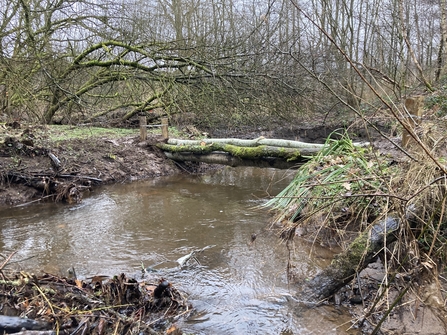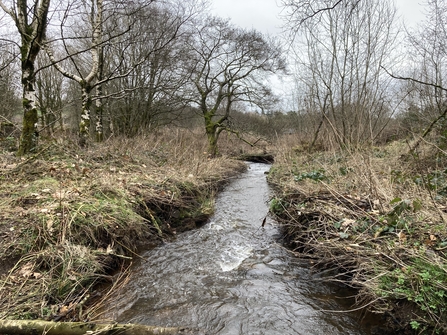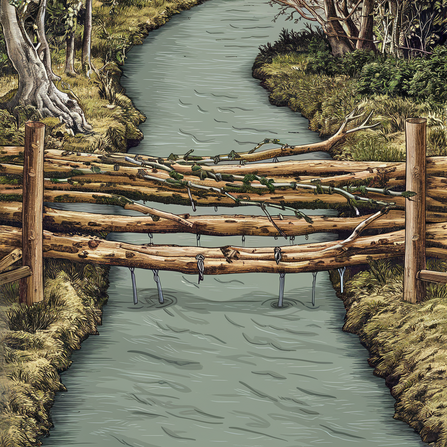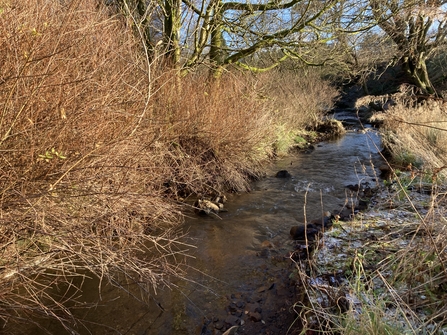What are leaky wooden dams?
These are structures that are built from logs and woody material across rivers or streams to slow and hold back water during storm and flood events. They often form naturally across watercourses when there is enough surrounding woodland, but we can intervene in places to mimic and encourage these natural processes.





